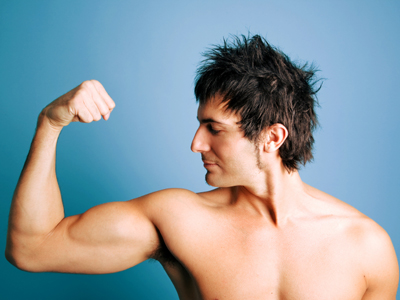
The flexor muscle for the elbow joint is the bicep.
Skeleton, Joints and Muscles 01
An enjoyable way to test your knowledge about various parts of your body. What are ligaments?
Between the ages of 11 and 14 our quizzes are invaluable.
Scroll down to play the quiz
1 .
Which of the following is NOT a function (job) of the skeleton?
A framework of bones
Protecting organs
Supporting the body
To allow movement
A skeleton is a framework of bones but this is not its job, it is its description
2 .
The function of the skull is .......
to allow movement of the neck
to allow you to hear
to allow you to see
to protect the brain
The bones of a baby's head are joined flexibly. This allows the head to slightly change shape and makes it easier for them to be born. As they grow, the skull bones grow by a small amount and join together solidly
3 .
Muscles are joined to the bones by .......
cartilage
ligaments
patellas
tendons
Tendon injuries can take many months to heal. In some cases, it can take over a year
4 .
Which of the following are needed for healthy bones?
Calcium and vitamin C
Calcium and vitamin D
Iron and vitamin C
Iron and vitamin D
Calcium and vitamin D are found in eggs and milk
5 .
The elbow is a hinge joint. Which is the flexor muscle?
Biceps
Deltoid
Quadraceps
Triceps
This bends the arm by contracting
6 .
Antagonistic action of two muscles means .......
Both muscles contract
Both muscles relax
As one muscle contracts the other relaxes
Both muscles do nothing
Antagonistic means working against each other
7 .
Which of the following is NOT a bone in the arm?
Femur
Humerus
Radius
Ulna
The femur is in the leg - it's the thigh bone
8 .
Bones are held together at a joint by .......
cartilage
ligaments
muscles
tendons
If you injure a ligament, it can take many months for it to recover. This is unlike an injury to a muscle which normally only takes a few days to heal, depending on how bad the injury is and how healthy you are
9 .
At a joint the ends of the bones are covered in .......
cartilage
fluid
muscles
tendons
The cartilage stops the bones rubbing on each other and wearing away
10 .
Which is the extensor muscle in the arm?
Biceps
Deltoid
Quadraceps
Triceps
This straightens the arm by contracting
**Unlimited Quizzes Await You! 🚀**
Hey there, quiz champ! 🌟 You've already tackled today's free questions.
Ready for more?
Ready for more?
🔓 Unlock UNLIMITED Quizzes and challenge yourself every day. But that's
not all...
not all...
🔥 As a Subscriber you can join our thrilling "Daily Streak" against other
quizzers. Try to win a coveted spot on our Hall of Fame Page.
quizzers. Try to win a coveted spot on our Hall of Fame Page.
Don't miss out! Join us now and keep the fun rolling. 🎉
**Unlimited Quizzes Await You! 🚀**
Hey there, quiz champ! 🌟 You've already tackled today's free questions. Ready for more?
🔓 Unlock UNLIMITED Quizzes and challenge yourself every day. But that's not all...
🔥 As a Subscriber you can join our thrilling "Daily Streak" against other quizzers. Try to win a coveted spot on our Hall of Fame Page.
Don't miss out! Join us now and keep the fun rolling. 🎉







